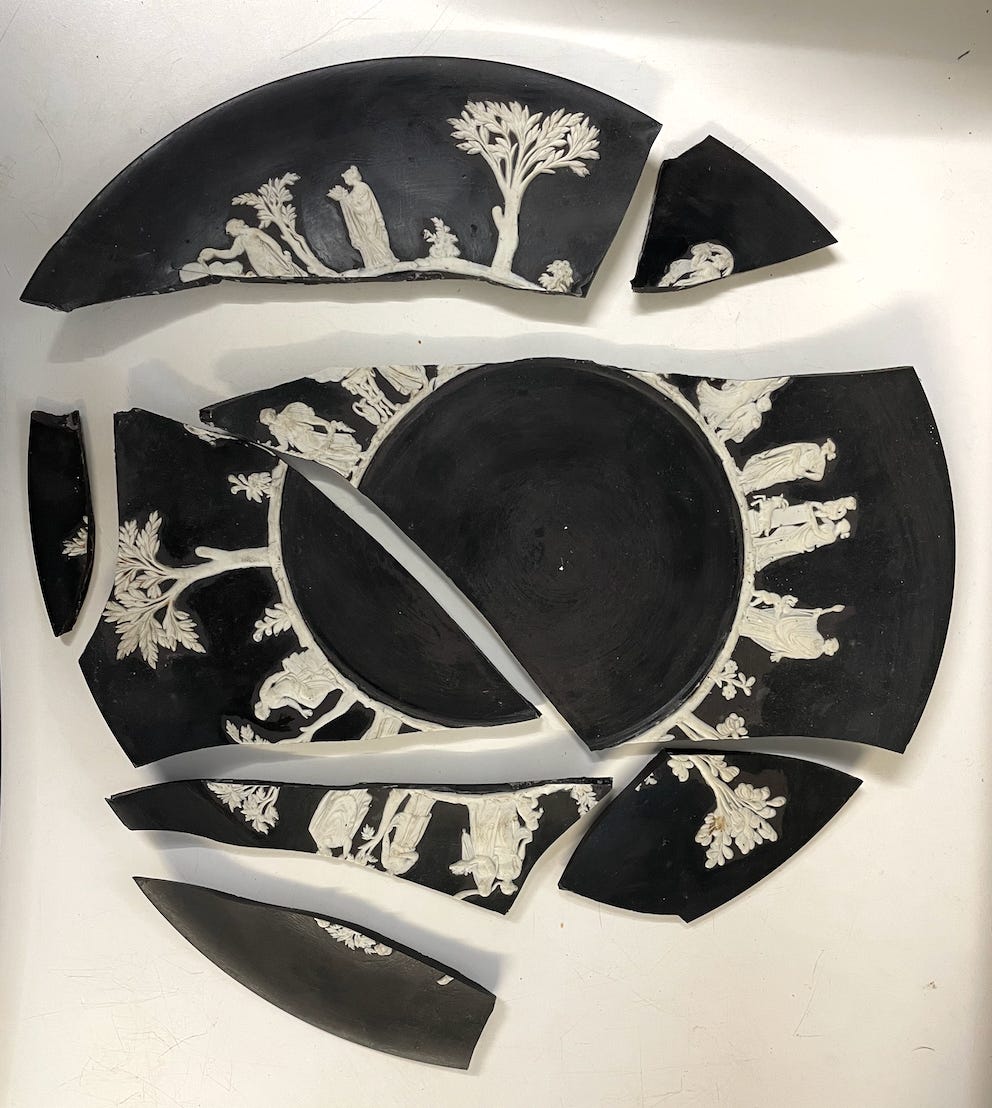The Vet Vault 3.2.1.
Finally a grape toxic dose (!), eosinophilic lung disease, frustration-free cryptorchid surgery, and beauty in imperfection.
3 Clinical Pearls.
1. Grapes and dogs - finally some answers!
From episode 172 on the ECC stream. With Dr Tina Wismer.
Making a 30 kg dog puke because it ate 1 grape always feels a bit excessive, right? But until recently, because we had no idea of what was actually causing the kidney damage, never mind how much of it was considered a toxic dose, that was just what we had to recommend. But no more!
Toxicologist Dr Tina Wiser told us in the episode recorded at IVECCS that:
We now have a pretty good idea what the toxin is in grapes: it’s tartaric acid.
We have some dosage guidelines on when we should make dogs vomit:
If you’re patient has eaten more than one grape or raisin per 5 kg/ 10 pounds of dog, or
more than 2 COOKED grapes or raisins (eg hot cross buns, puddings etc) per 5kg/ 10 pounds per dog, you should make it vomit. Less than that - you can chill a bit.
(Lots more grape details on the full episode, plus many other great top tips.)
2. Eosinophilic lung disease - it’s a thing.
From episode 175 on the Medicine stream. With Prof Lynelle Johnson.
Confession: I’d heard of the term eosinophilic lung disease, but I thought it was some rare condition that dogs get in other countries where they struggle with lots of lungworm, and maybe fungal diseases. Apparently I was wrong, as we learnt from Prof Johnson in this episode. Here are some key things to know, for anyone else with the same gaps in their knowledge:
Prof Johnson says that of the cases they work up for chronic coughing, about 15% have eosinophilic lung disease.
It can be nasty, with serious cases looking over much like pneumonia.
Lung rads can look very much like cancer.
You can reliably diagnose it with a transtracheal wash - no need for BAL.
And despite how severe they can be - you can usually totally fix them with pred. Like - cure it. (Lots of pred, for quite a long time, but still.)
3. Cryptorchid surgery pro tips.
From episode 168 on the surgery stream. With Dr Chris Tan.
Anyone else ever scrounged around in an abdomen, or in a fatty inguinum, hunting for an elusive testicle, like the best man minutes before the wedding who just lost the ring in a rubbish bin? Me too.
Surgeon Dr Chris Tan gave us the best description on how to do a stress-free cryptorchid castration (where you don’t accidentally cut out the prostate - that’s a thing!) you’ll ever hear. Here’s a couple of pearls:
If you think it’s in the inguinal area - pop an ultrasound probe on to confirm this. It may just be a fat pad that feels like a testicle, and you definitely don’t want to be blindly digging around in that area.
If you can’t confirm its presence in the inguinum with ultrasound, go into the abdomen.
Don’t go looking for the abdominal testicle - let it come to you. Here’s how:
Flip the bladder out of your way.
Find the ureters.
Look for a white band that comes off the prostate and crosses the ureter. That’s the ductus deferens.
Pull on it. The testicle should come to you without too much tension.
If it doesn’t, or it looks like it’s heading the wrong way - out of the abdomen and into the inguinal canal the testicle is likely trapped in the inguinal canal. (And Chris has a great technique for finding these, which is too long to describe in a newsletter!)
2 Other things
“Ease is a combination of purpose, effort and skill. It can feel like confidence, even if we’re not sure it’s going to work. Especially then.”
“It occurred to him that his scarcely perceptible attempts to struggle against what was considered good by the most highly placed people, those scarcely noticeable impulses which he had immediately suppressed, might have been the real thing, and all the rest false.
And his professional duties and the whole arrangement of his life and of his family, and all his social and official interests, might all have been false. He tried to defend all those things to himself and suddenly felt the weakness of what he was defending.
There was nothing to defend.”
Leo Tolstoy
1 Thing to think about.
Ros’ gran used to collect Wedgwood plates. For most of her adult life she’d diligently put a bit of money aside for her one indulgence, so that once a year she could treat herself to another bit of ceramic joy - all the way from England - to add to the growing collection on the wall of the formal lounge of their remote farm in rural South Africa. When she passed away the plates were distributed between her granddaughters, which is why we have a collection of 7 classic Wedgwood plates on our kitchen wall - a little bit of ‘Dan’, as she was affectionately called by those granddaughters, thanks to the inability of one of them to pronounce the ‘gr’ of gran when they were little.
The black plate with white figures has always been our favourite - strikingly modern in a collection of polite pastel colours. Which is why the incident involving an enthusiastic 5 year old and a broomstick caused some genuine sadness - perhaps a bit of misplaced mourning for more than just a plate. So, like the loving well-meaning ‘let-me-fix-your-sadness-by-doing-something-practical’ husband that I am, I spent many hours painstakingly glueing it back together and then carefully sanding and cleaning the evidence of the repair. I did a decent job, and the plate resumed its place of pride amongst its old-fashioned friends. You had to look pretty closely to see the cracks.
I don’t even remember how it came off the wall the second time. I just remember that sad silence that followed - way worse than tears. I picked up the re-shattered pieces - beyond fixing this time. But I couldn’t bring myself to throw them away, so it joined my pile of ‘things to address one day when I have time’ items.
Some years later I came across an article on the Japanese art of kintsugi, a beautiful technique where the cracks in broken pottery are mended with lacquer mixed with powdered gold, silver, or platinum. I loved the philosophy behind it: the flaws and imperfections are a part of the object’s history, adding to its beauty. Embrace it by highlighting the flaws, not hiding them.
Recently, an upcoming birthday finally moved the plate out of the pile and onto my desk:
For the first decade of our relationship friends would comment on what a perfect couple we were. It really felt like it. But life happens. Work happens. Kids happen. You age. You change. And like a toddler running around with a flailing broomstick, life tends to knock you and your relationships off the wall every now and again.
I’ve tried very hard over the years to repair our relationship to what it first was. Especially during that initial post-kids period: maybe if I glue it just right and obsessively sand the rough edges we can once again be the carefree madly in love young couple we once were. Sometimes we did a pretty good job. From a distance you could hardly see the cracks.
But I’m learning (slowly) that the much wiser approach is to love it for exactly what it is: uniquely, perfectly, imperfect.
Much love,
Hugh
PS. I wrote the one thing about relationships, but reading it again makes me think that it can apply pretty neatly to a vet career - this being a newsletter for vets and all.
How to connect with us:
Listen
Learn
Connect
If you are finding these emails useful - do us a favour and forward it to a friend who you think would like it too.
And if you are that friend who had this forwarded to them and you want to get more of these emails, then …







